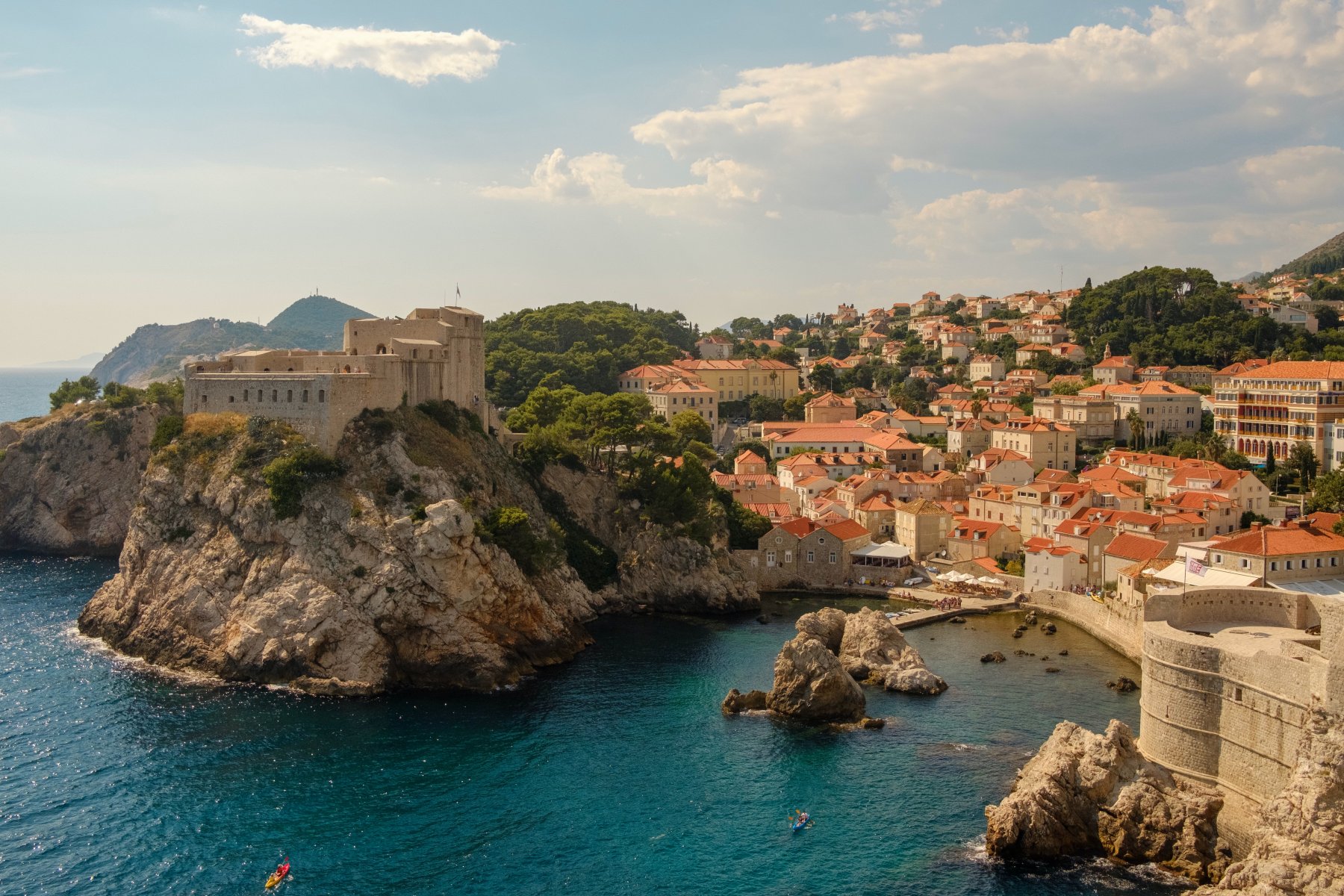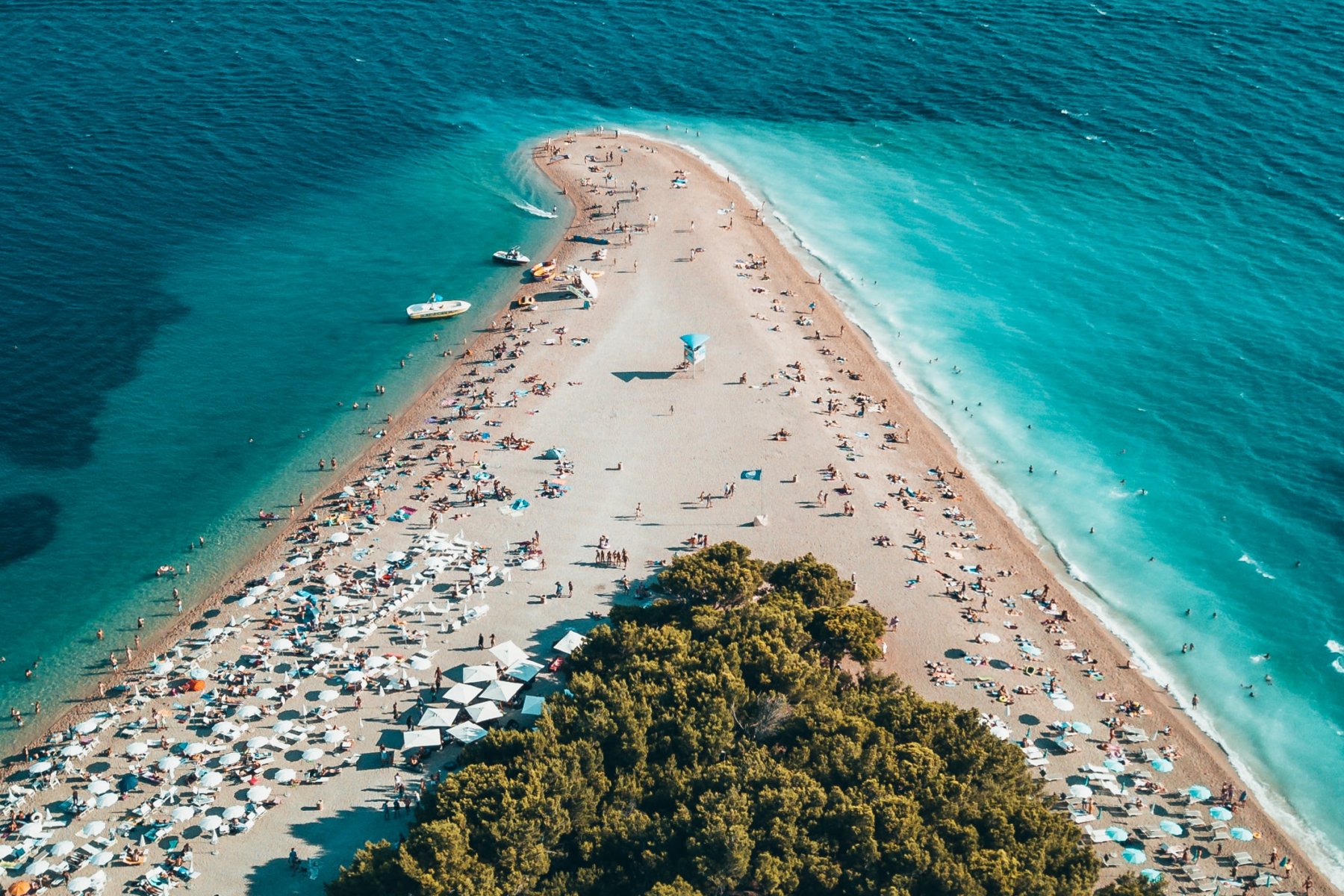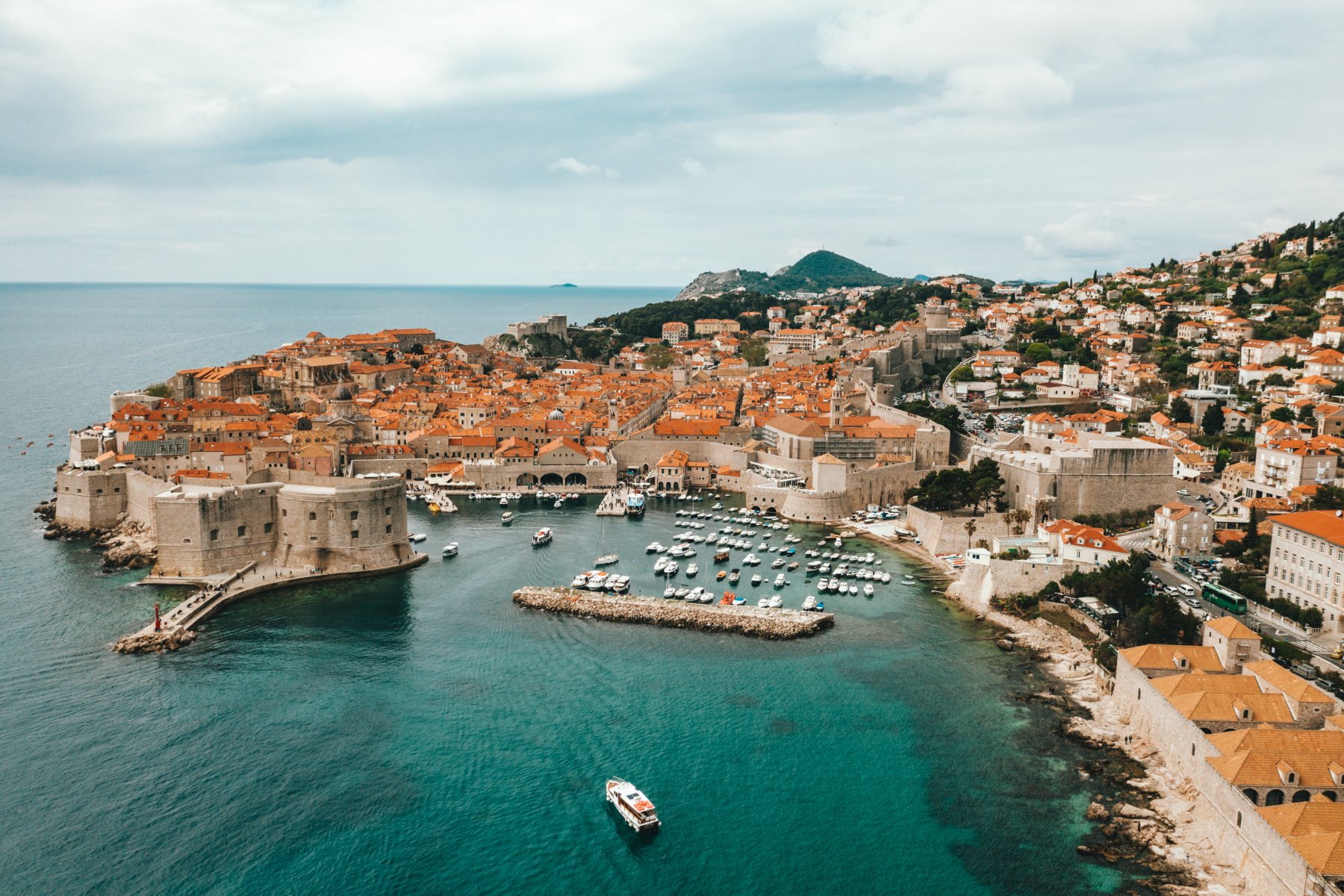Routes
Croatia
Croatia has an amazing 5,835km of coastline, 4,057km of which belongs to islands, cliffs and reefs.
Croatia has an amazing 5,835km of coastline, 4,057km of which belongs to islands, cliffs and reefs. There are 1,185 islands in the Adriatic, but only about 70 are populated. The largest island is Krk (near Rijeka) at 462 square km. The climate is Mediterranean along the Adriatic coast, meaning warm dry summers and mild winters, with 2,600 hours of sunlight on average yearly – it is one of the sunniest coastlines in Europe! In the interior of the country, the climate is continental with hot summers and cold, snowy winters. The Croatian coastline is perfect for sailing holidays. With so many islands and small ports, you can stop as many times as you like or sail for as long as you wish.
1 Day In Croatia
Split
Split is the second largest city in Croatia, with just under 200,000 inhabitants, and is the largest on the Adriatic coast. Obviously, the most important sight is Diocletian’s palace. Do not miss the Peristyle which is the main open space in the palace and is surrounded by a colonnade of six columns to the eastern and western sides and an arch, decorated with garlands, in the centre. On the eastern side of the Peristyle is a cathedral. On the western side is the “People’s Square” (Narodni trg) with the old town hall which was built in the 15th century.
The Kornati islands
This archipelago consists of 140 islands covering an area 114 square miles (300 square km) and most of the area has been declared a National Park because of its natural beauty, due to its numerous coves and crystal clear blue waters. George Bernard Shaw fell in love with the group of islands and said “On the last day of Creation God desired to crown His work, and thus created the Kornati islands out of tears, stars and breath.” There are no permanent residents of the islands and most of the area belongs to the people of Murter island who come to tend the olive groves, the vineyards and orchards. They have cottages there, in which they stay during the agricultural season.
Brac
One of the most accessible islands in the Croatian Adriatic. This island is the largest in Central Dalmatia at 150 square miles (394 square km), the third largest in the Adriatic, and is one of the sunniest with 2,700 hours annually. The island is known for its agricultural products and the locals produce good wine, olive oil, figs, nectarines and other fruits.
Hvar
Hvar is the fourth largest island at 182 square miles (300 square km). It is even sunnier than Brac, with almost 2,800 hours of sunshine per year. However, there is enough rain to keep the island green and to maintain the beautiful fields of lavender, rosemary, sage, marjoram and thyme and the carefully cultivated vineyards. Many people remark that in the spring, Hvar smells like a herbalist shop! When in Hvar, you must purchase some lavender oil, which is the major export of the island.
Vis
Vis is the most westerly of the larger Croatian islands, at 24 miles from the mainland, and its area is 56 square miles (90 square km). Vis is the oldest established town in Dalmatia, founded in 397 B.C. by the ruler of Sicily, Dionysius – the Latin name for the island is Issa. Some of the most exclusive wines in Croatia are produced there, such as Plavac and Vugava.
Korcula
The sixth largest island, it is 20 miles long and rather narrow, between 4 and 5 miles wide on average. This island is known for its dense forest and the ancient Greeks called the island Black Korcula (Kerkyra melaina) for this reason. Still on the subject of history, it is interesting to mention that Marco Polo, the famous adventurer, was born on Korcula, and his house still there.
Mljet
Mljet is 23 miles from Dubrovnik and is the southernmost of the larger islands. Its area is 62 square miles (100 square km). Over two-thirds of the island is covered by forest with the western half of the island declared a National Park. The Lonely Planet guidebook calls it “the most seductive island in the Adriatic”. According to legend, Odysseus fell in love with the island and stayed there for seven years.
Dubrovnik
George Bernard Shaw was enchanted by this beautiful city: for him, it was paradise. Dubrovnik has a remarkable history. An independent, merchant republic for 700 years (abolished by Napoleon in 1806), it traded with Turkey and India in the East (with a consul in Goa, India) and had trade representatives in Africa (Cape Verde Islands). The old town was completed in the 13th century and remains virtually unchanged to the present day. Tall ramparts surround it and there are only two entrances to the old town which lead to the Stradun, the city’s promenade. One of the greatest pleasures for many visitors is to have a drink in one of the nearby cafes and watch the world go by, whilst they themselves are being watched by the city patron, St. Blaise, or Sveti Vlaho as the locals call him. In 1991/2, the Serbs shelled the city causing considerable damage, but thanks to local effort and international aid, the old town has been restored to its former beauty.
Zadar
Zadar is the main city in Northern Dalmatia with over 76,000 inhabitants. Zadar Old Town is located on the tip of a narrow peninsula. Most of the town is surrounded by city walls, with towers and two city gates of interest.
Please click to see a list of yachts for charter we offer in Croatia, and make a detailed search.





